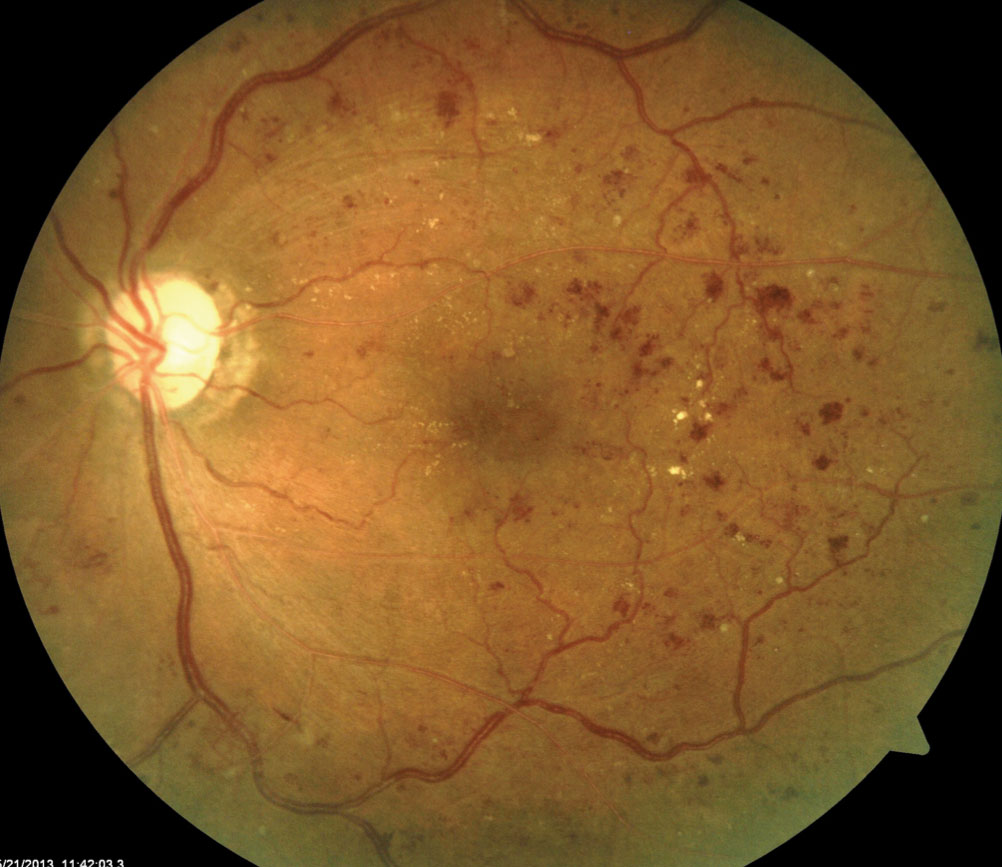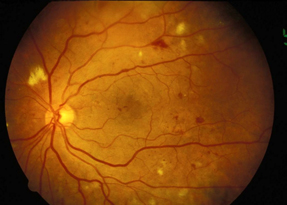

After 1 month of the COVID-19 treatment, fundus examination improved and fluorescein angiography demonstrated no diabetic retinopathy signs, no retinal vasculitis and no significant delay in arterial or venous filling. For each etiology, the ocular and systemic sequelae, symptoms, testing, treatment, and. The ophthalmic literature was reviewed and reports of peripheral retinal hemorrhages were included. Fundus examination revealed bilateral venous stasis and dot and blot intra-retinal hemorrhages preceding the diagnosis of COVID-19 in a patient with mild respiratory symptoms that progressed within a few days to a severe respiratory distress. The possible etiologies and pathophysiology of peripheral retinal hemorrhages are discussed and a management plan for the primary care clinician is presented.

We report here the first case of a patient with bilateral unusual dot-blot retinal hemorrhages and retinal venous dilation who presented shortly thereafter a PCR-proven COVID-19.Ī 59-year-old woman presented with a 7 days history of blurred vision in both eyes. As the pandemic is spreading and the whole picture is yet unknown, ophthalmologists should be aware of unusual ocular presentations of COVID-19 since they could precede the development of severe respiratory distress. Preterm babies retinal hemorrhages retinopathy of prematurity.There have been anecdotal reports of ocular manifestations in the Coronavirus Disease 2019 (COVID-19). Regular follow-up until the clearance of hemorrhages and monitoring systemic conditions in these babies of amblyogenic age-group are required. Although not all progress to ROP, recognizing preterm and low birth weight babies with junctional hemorrhages is crucial not to delay the treatment.

Retinal hemorrhages in neonates are commonly associated with prolonged duration of second stage of labor, advanced maternal age, and anemia.

of eyes = 74, 65%) resolved within 4 weeks, whereas four babies (8 eyes, 7.4%) progressed to ROP were treated with laser. Flame-shaped hemorrhages were more common than dot and blot ones. These hemorrhages were more often bilateral (no. Low birth weight and preterm were fetal risk factors with neonatal retinal hemorrhages. Elderly primigravida mothers and spontaneous vaginal deliveries with prolonged second stage of labor were a common maternal risk factors for retinal hemorrhages. Retinal hemorrhages were assessed in terms of type, area, and relation to different retinal zones.Īmong 540 neonates who were screened, retinal hemorrhages were found in 11.2% (n = 60 babies). Maternal, obstetric, and neonatal risk factors were assessed in neonates with retinal hemorrhages. To evaluate the clinical characteristics of intraocular hemorrhages among babies screened for retinopathy of prematurity (ROP) and thereby their additional risk to the progression of ROP.Ī descriptive study was conducted at a tertiary referral hospital, which included 108 eyes of 60 neonates who were discovered to have retinal hemorrhages on retinal screening of 540 babies at risk for ROP.


 0 kommentar(er)
0 kommentar(er)
